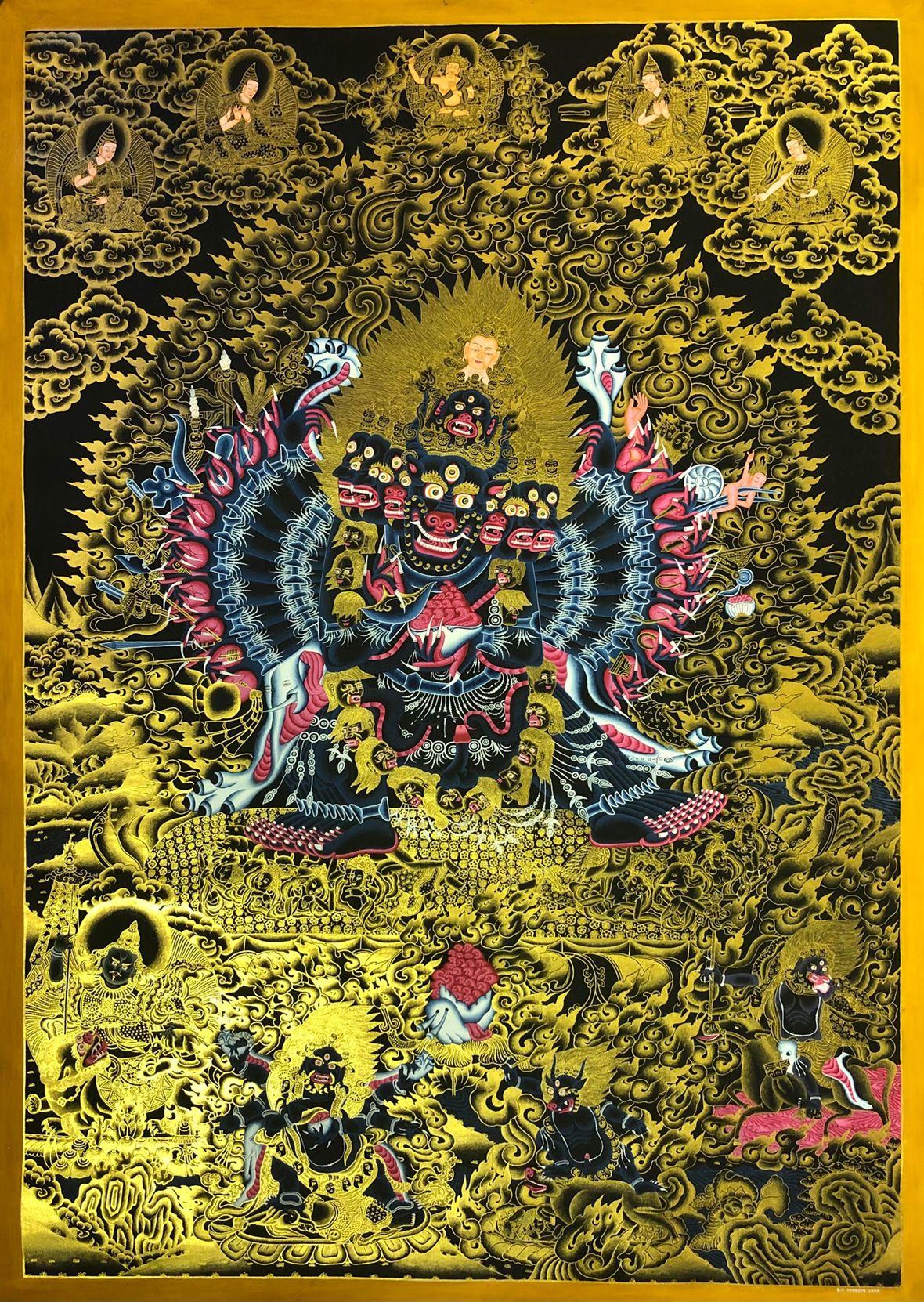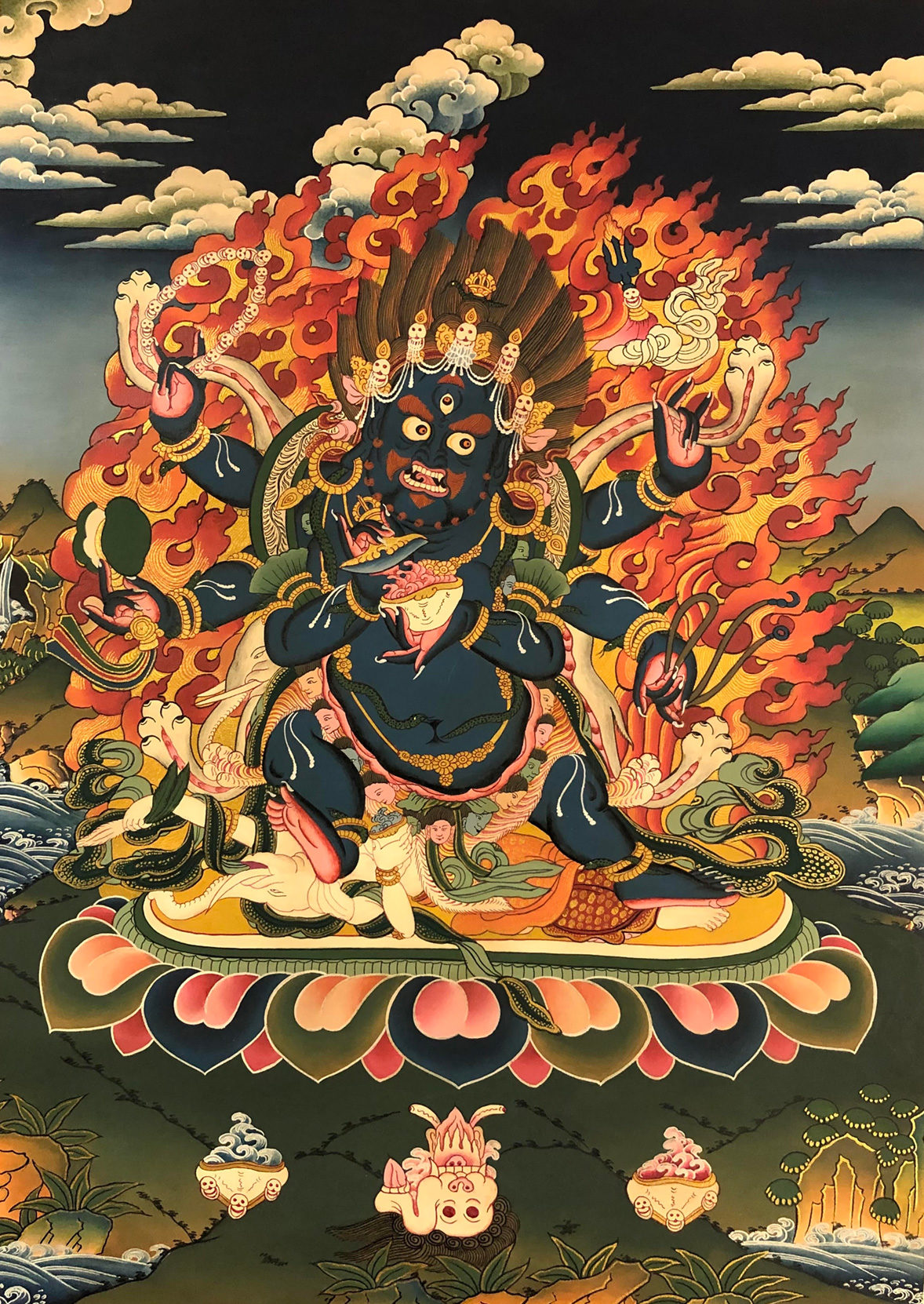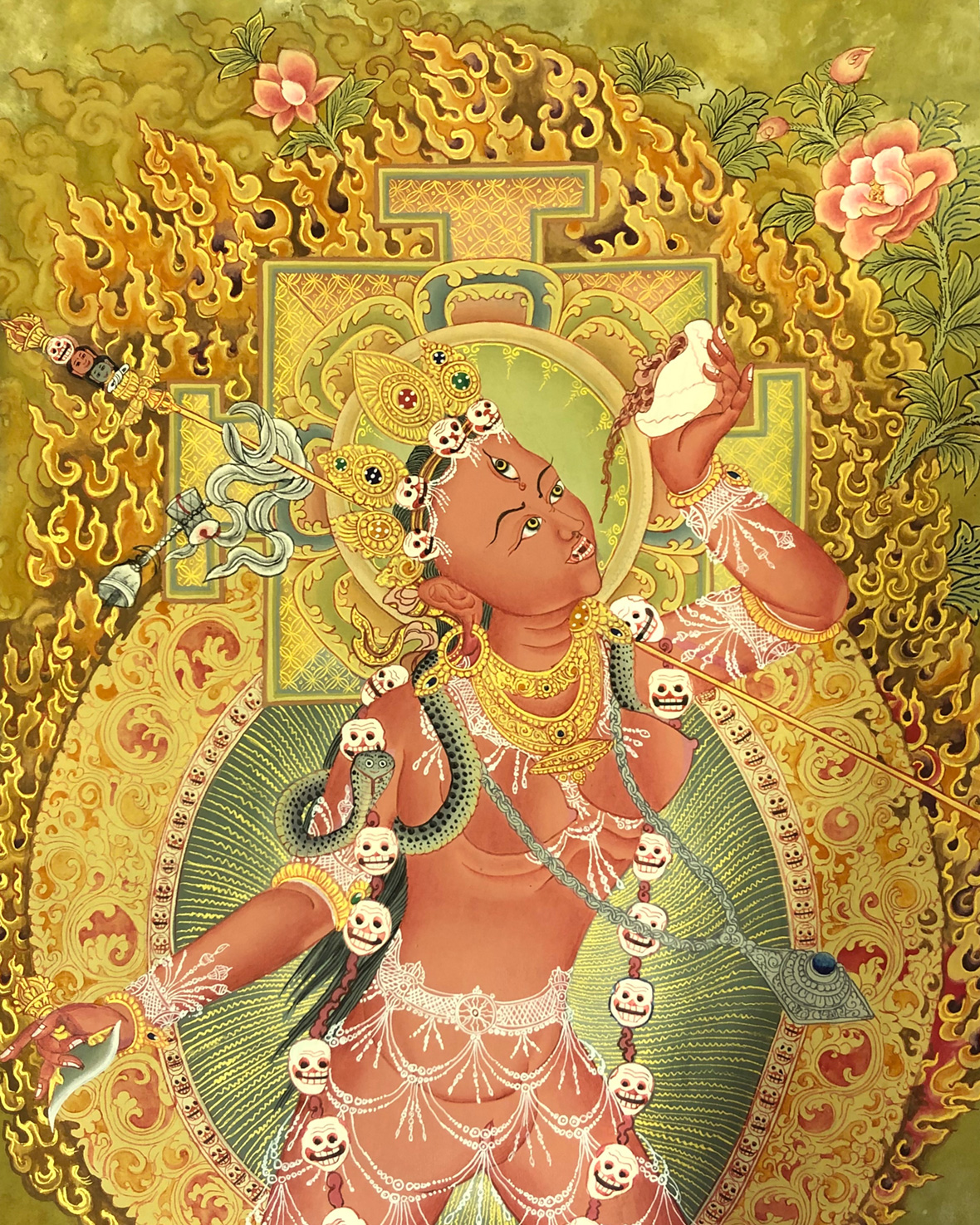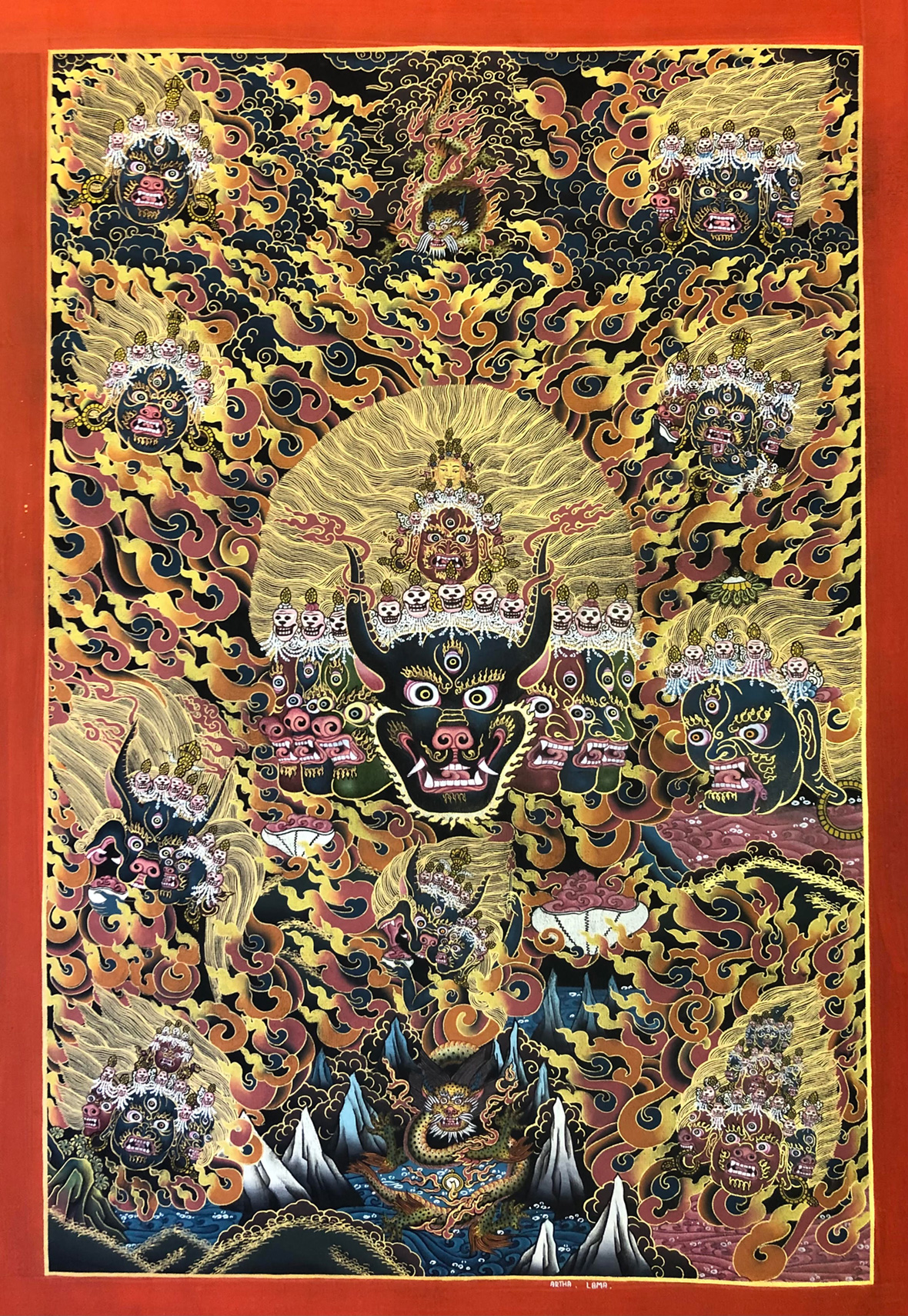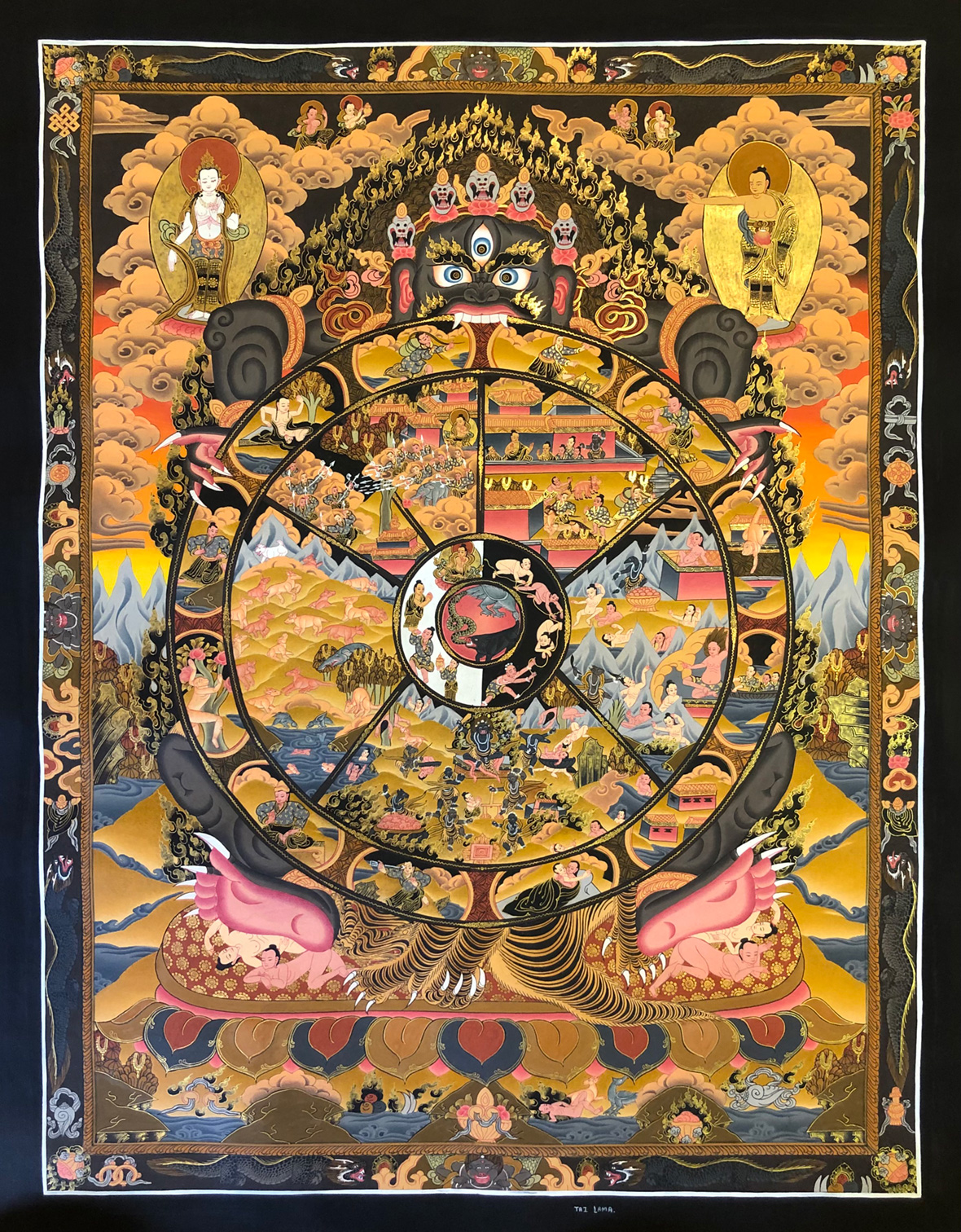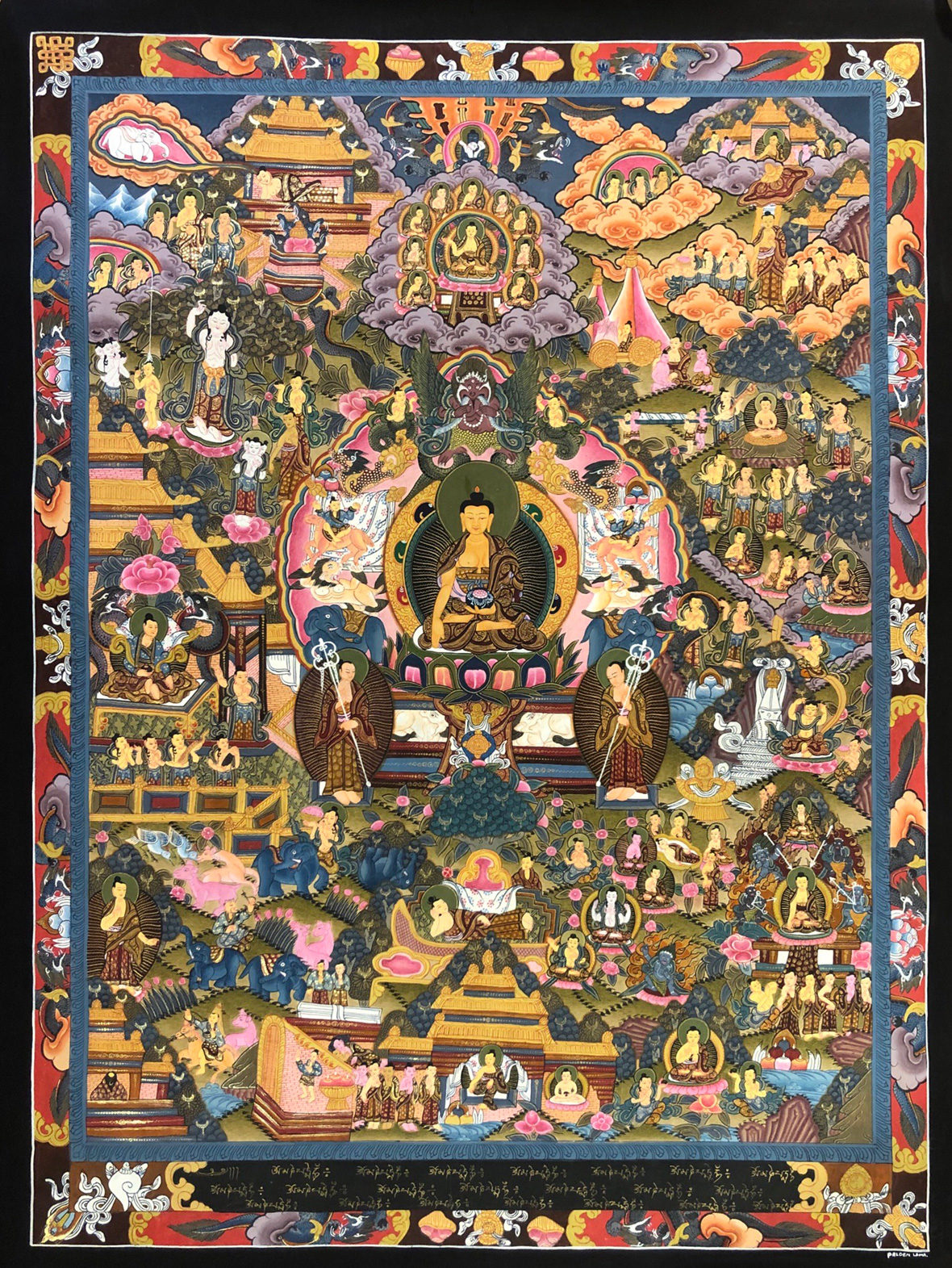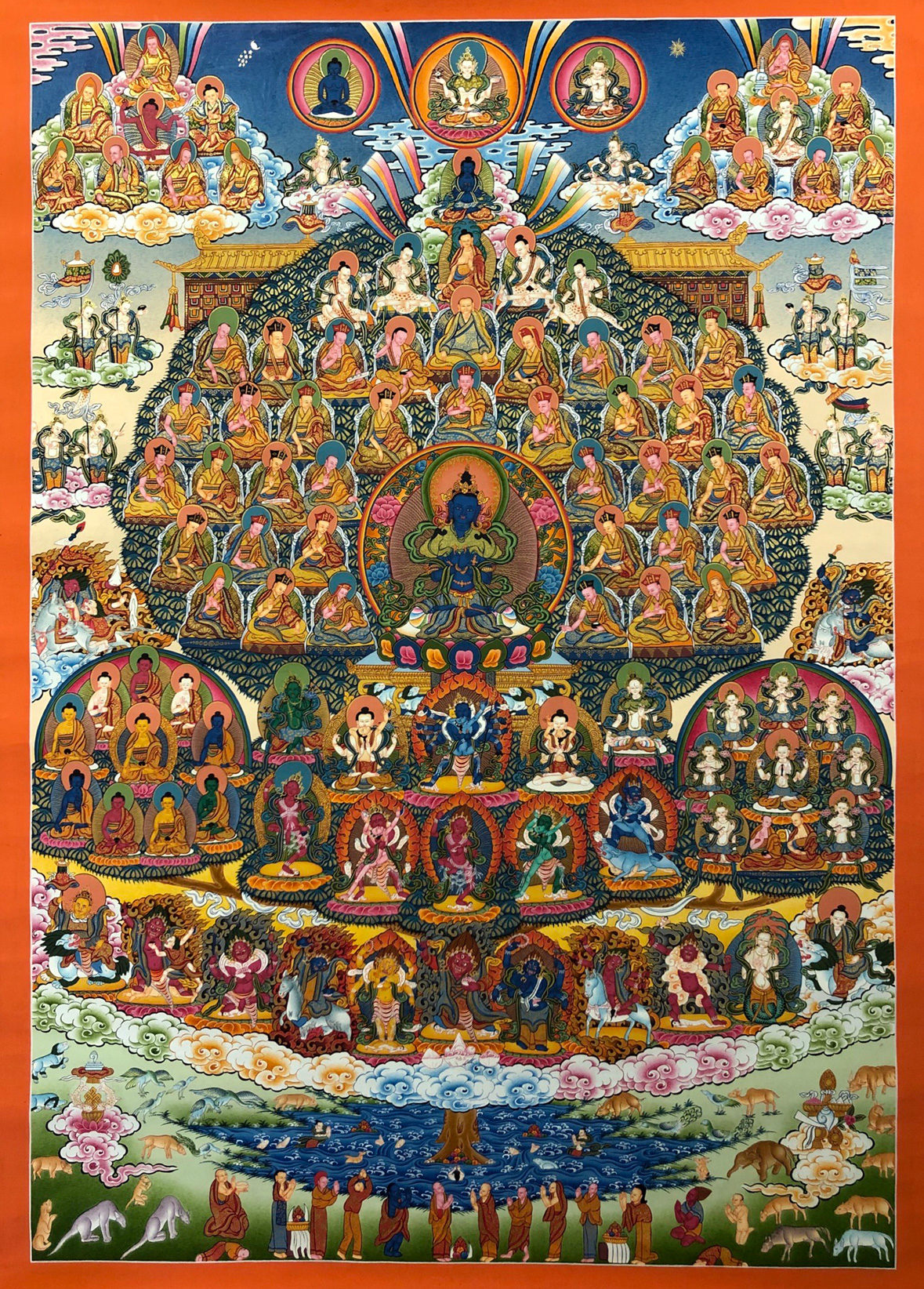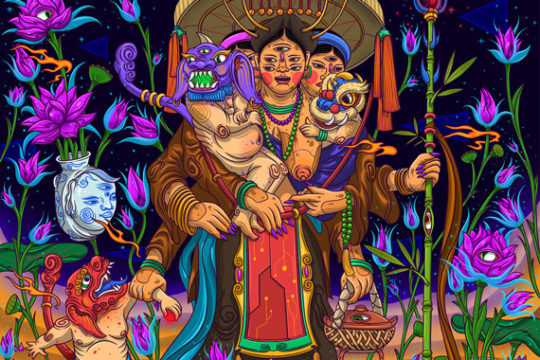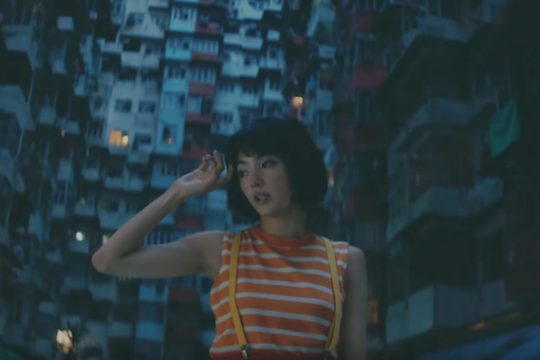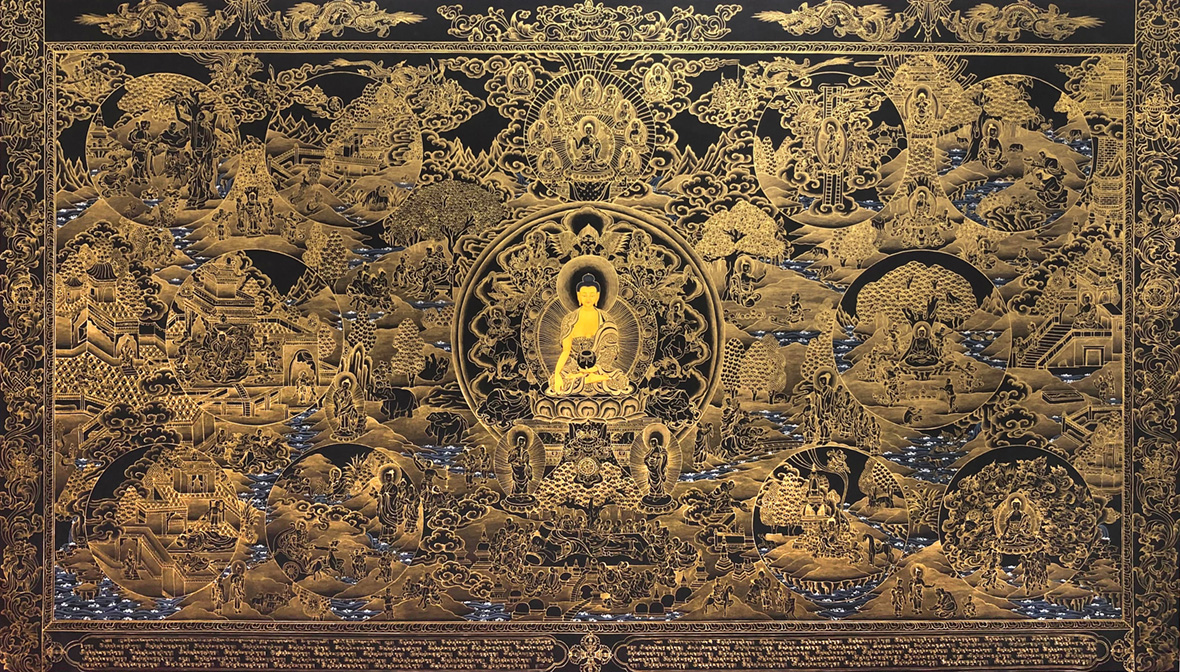
Staring into a Newari Paubha Thangka painting can feel like gazing into another dimension. The traditional Nepalese style of Tibetan painting is full of endless details, spiraling forms, ethereal colors, and otherworldly figures and objects. Various Buddhist deities slide across the surface, wave in effortless dance, and stare back deeply into viewers’ eyes. Swirling line work creates portals that guide you into their worlds while rippling flames flutter hypnotically in concentric forms. Scene of lore and sacred objects dot the landscape in purposeful patterns. If it feels like they’re intentionally meant to draw you out of the physical world, that’s by design, since they’re frequently used specifically for meditation.
当你凝视尼瓦尔唐卡画(Newari Paubha Thangka)时,你将跌入另一个维度的世界。它是尼泊尔传统藏地绘画,拥有着繁复的构图以及层峦叠嶂式的丰富细节,超凡的色彩、人物与事物,尽显绘画的极致。佛陀与神灵处于画面焦点,他们随着笔触的走向翩翩起舞、或神态郑重地注视着观众的双眼。颜料与线条,在你眼前开辟一道时空的大门,在层层闪耀的烈火和云彩中,带你遁入一片秘境。那些传说中各式各样的神圣之物,以某种约定俗成的方式缜密排列。所有这些元素同时出现在一幅画内,就算你是无神论者,也会被眼前的力量所震撼,这股力量是神秘的,好像能带人们通往另一个世界。而这却是尼瓦尔唐卡画的创作本意,它们专为佛教徒的冥想而诞生。
These religious Paubha paintings were once central to Buddhist life of the Newari peoples in the tiny, mountainous country in between China and India, and they have origins that stretch back to cave paintings along the silk road. In modern times, they’ve fallen somewhat out of favor, with a shrinking number of practitioners skilled in their detailed ways. To ensure that the artwork continues on into the future, master artist Ram Bahadur Lama started the Lama Thanka Painting School in 1972. His goal is to teach new students the ways of thangka painting and bring it into the fold of contemporary, global society. The name Lama translates literally to guru and is given to spiritual masters who guide followers on the path to enlightenment.
Ram Bahadur, who is now 53 years old, grew up in the Ramechhap area of Nepal at a time when thangka artists were still commonly associated with life inside temple walls. “It was passed down in my family from father to son, generation after generation,” he says. “I started to learn when I was 14 years old because I was fascinated with our Himalayan traditions of doing art. It became my aim to follow the culture and preserve it, and I attained the title of master at 36.”
尼瓦尔唐卡画又名帕巴(Paubha)画,曾是尼泊尔尼瓦尔人(Newari)在进行佛教修行时运用的主要艺术形式。其最早可追溯至十一世纪,丝绸之路上所建造的佛教洞穴。时至今日,这种艺术形式已经逐渐被大部分现代人忽视,资历深厚的创作者可谓少之甚少。为了避免艺术的失传,著名的唐卡大师 Ram Bahadur Lama 于 1972 年创办了 Lama Thanka 绘画学校(Lama 意为“上师”,中文称作是喇嘛,是对佛教僧侣的尊称,往往是由他们指引信徒领悟心性和法身),旨在延续这项传统画法,并推向世界各地。现在,这所学校还开设了 Instagram 帐户,用来分享唐卡大师们的佳作。
现年 53 岁的 Ram Bahadur 自小在尼泊尔的 Ramechhap 地区长大,在那个年代,唐卡画师仍普遍与寺庙紧密联系在一起。谈及自己从事这门艺术的经过,他说道:“在我的家族中,每位父亲负责把这种艺术传授给儿子,一直这样世代延承。我从 14 岁开始学画,当时我对喜马拉雅地区的艺术传统很是着迷。传承和保护这种文化成了我的使命,后来我在 36 岁时获得了大师的称号。”
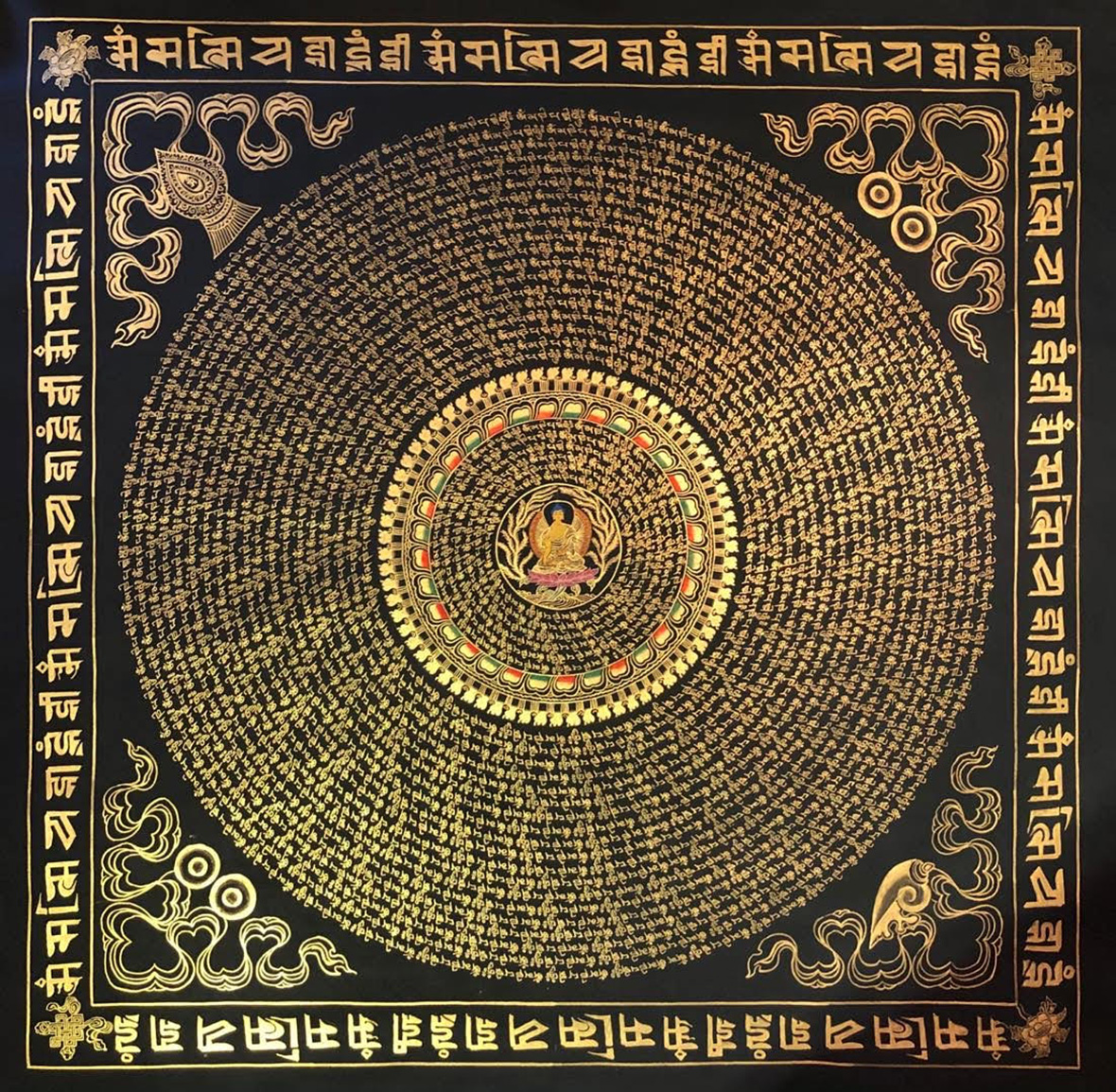
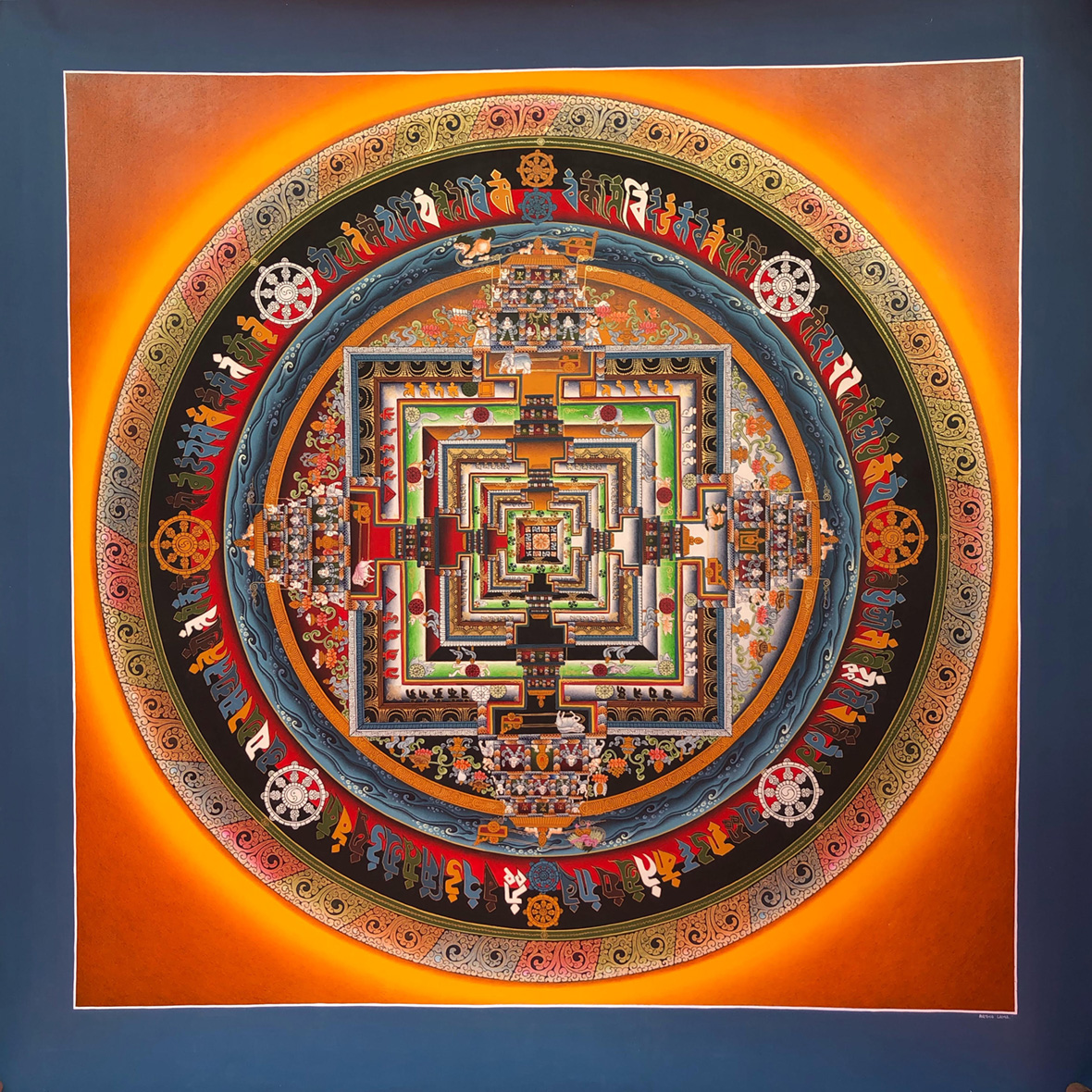
The school is located in Bhaktapur Durbar Square, a few kilometers east of Kathmandu, where its main founding artists had already settled before it opened. The area is full of ancient architecture and temples surrounded by narrow streets. The school is made up of two buildings, the main one featuring the gallery, where they collect and display the paintings of their artists. The master artists paint there as well. (Their Instagram is dedicated to paintings by the school’s masters.) The second building is a short walk away, where students are taught in one on one classes. They started with seven or eight founders in the 70s, and four students have since become masters.
学校位于加德满都以东 13 公里的巴克塔普尔杜巴广场(Bhaktapur Durbar Square),那里的狭窄街道纵横交错,古老建筑和寺庙随处可见。学校由两栋建筑构成,主楼包括一个画廊,用来展示学生和老师的作品,也是唐卡大师作画的地方;第二栋房子和主楼相隔很近,画师在那里进行一对一授课。学校从 70 年代的 7、8 位创始人开始,直到今日,一共仅有 4 名学生曾获得过大师的称号。
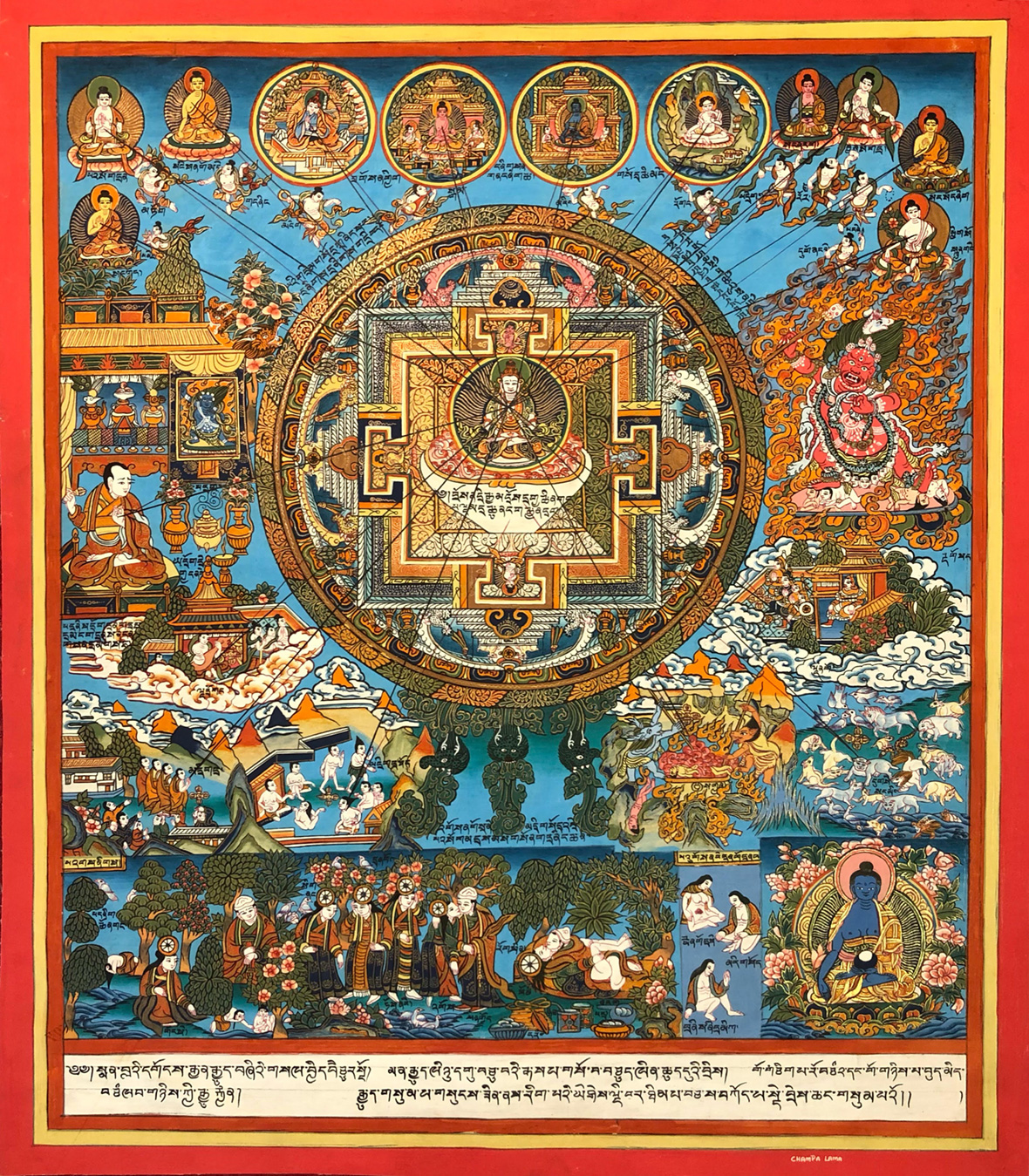
To become a master takes many years of training in the Tantric discipline and they’re mostly monks or lamas familiar with visualization and meditation. It used to be only Buddhist monks that became masters, although now a student only needs to be skilled enough and trained properly but knowledge of Tibetan Buddhism is still essential. Art councils currently award the title.
The painting school strictly follows the traditional procedures of thangka painting, but they encourage contemporary interpretations and teach various styles from Nepalese to Tibetan and Japanese thangka. The paintings either depict sacred portraits of deities or mandalas of Tibetan and Sanskrit text. The deities pose with specific mudras, or gestures, and their associated attributes for the purpose of worship. For example, the Medicine Buddha “protects all living beings from mental and physical sickness, helping to eradicate the three poisons of attachment, hatred, and ignorance.” The mandala thangkas spell out the mantras, or prayers, of individual deities.
成为唐卡大师需要多年的密宗修行。在过去,只有僧侣或喇嘛才有可能获得大师的称号。但现在,学生只要拥有炉火纯青的绘画技法就有可能成为大师,当然,对于藏传佛教的了解也必不可少。目前,大师的头衔都由当地的艺术协会授予。
学校严格遵循了传统的唐卡绘画工序,同时鼓励当代形式的创新,西藏、日本等不同流派的唐卡艺术也在授课范围以内。通常,画作所描绘的都是神像、藏传佛教的曼陀罗艺术和梵文经文上的内容。画中的神像呈特定手印或手势,伴随数不胜数的宗教元素。不同的佛陀配套相对应的宗教元素,比如,药师佛身旁写着“保护一切众生免于身心疾病,破除贪、瞋、痴三毒”的字样;曼陀罗唐卡画中的每一位神灵身旁的经文和祷语都不一样。
The paint used in thangkas are mineral pigments, organic dyes, and gold leaf; they’re painted on linen, silk, and cotton canvases coated with chalk and glue gesso; and they range in size from 25 cm to 22 ft. The larger paintings can take three months to a year to complete and are used for multiple purposes. For one, they can aid the recently dead during transmigration, helping to offer positive karma on their way to reincarnation. They’re also used in single-point meditation, helping to focus solely upon the object of meditation, often the deity depicted in thangka. And of course, they’re used as decoration too. Today, many sacred Tibetan thangka paintings can be found in different museums and most Tibetan homes hang them.
绘制唐卡所用到的原料有矿物颜料、有机染料和金箔,通常在涂有白垩粉和胶浆的亚麻、丝绸和棉画布上进行创作。画幅从 25 厘米到 6 米不等。一般,大型画作可能需要三个月到一年的时间完成。画的用途很广,一方面可以为亡者的轮回转世带来积极的作用;另一方面,有助于佛教徒的专注和冥想,帮助冥想者专注于唐卡画中的神像;最后一种用途是作为装饰。现如今,有许多博物馆都藏有唐卡画,其也常常悬挂在藏族家庭。
Although it’s mainly Nepalese students, there are a lot of foreign artists as well. But they only accept students who pass an artistic aptitude test. The school additionally makes an effort to encourage younger students and women to train, who are not traditionally well represented in the culture. Their first female master joined in the early 90s and they’ve trained over 80 women.
The center also hopes that students will take the form in new directions. “We respect one’s vision, it makes a painting unique,” says Manish Lama, the school’s manager. “There are strict standards for a deity’s body postures, facial expressions, and gestures because they carry important symbolism. But beyond that, we encourage students to be creative and independent.”
学校的大多数学生都是土生土长的尼泊尔人,但偶尔也会有外国艺术家慕名前来。对于学校而言,他们并不关心学生的国籍;学生能否顺利达到绘画能力标准,是他们最关心的。历史上,女性唐卡画师很少见,但学校正努力鼓励更多女性学习这门艺术。从学校走出的第一位女唐卡大师是在九十年代初,至今也已培训出 80 多名女性唐卡画师。
除此之外,学校还希望学生能在绘画唐卡画时有所创新。学校负责人 Manish Lama 表示:“我们尊重每个人的想法,这也是每一幅画的特别之处。除了传统佛像中既定的姿势和外观,我们鼓励学生发挥自主创意。”
Like our stories? Follow us on Facebook and Instagram.
Website: www.thangkanepal.com
Instagram: @lama_thanka
Contributor: Mike Steyels
Chinese Translation: Olivia Li

